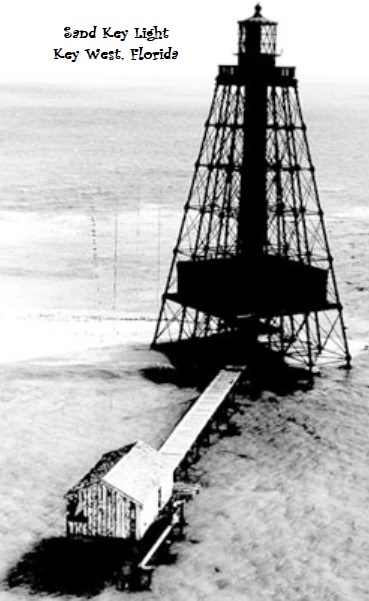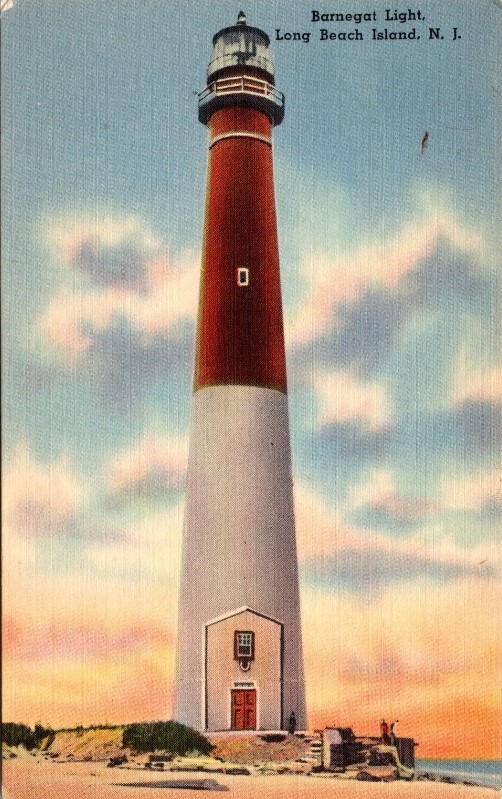Timothy Van Staden
George Gordon Meade’s Lighthouses
George Meade was born on New Year’s Eve in 1815. His parents were living in Cadiz, Spain, where his father, Richard Worsam Meade, a son of a wealthy Philadelphia merchant and land speculator had thriving business concerns in Western Europe. Richard Meade, who was only 39 at the time, was also serving as an agent in U. S. naval commodities, which forced his financial ruin and was compelled to return home to Philadelphia in 1817.
Young George’s elementary school years were quite a chaotic period in his life, during which he was “in attendance” at two different Philadelphia military schools, then one in Washington and a second in Baltimore. He entered the United States Military Academy at West Point on July 1, 1831, as a member of the class of 1835. He wanted to attend college and study law, but there was no financial way for that to happen. Nevertheless he managed to maintain grades high enough at the Academy to graduate nineteenth out of 56 cadets in spite of having accumulated 168 demerits for lack of attention to details in dress and drills.
Upon graduation George was commissioned a second lieutenant and worked as a surveyor and was later sent to serve in Florida. His involvement in the Second Seminole War earned him a promotion to full lieutenant, but at the end of the minimum required service of one year (1836) he resigned his commission and left the army.
He returned to Florida and became a citizen employee of the Army Corps of Topographical engineers. Throughout the next six years he worked on several major engineering projects in Texas, Mississippi, and even on the Maine-Canadian border.
In 1842, the United States Congress enacted a law that excluded civilians from working in the Army Corps of Topographical Engineers. Because he enjoyed the creative aspect of engineering, he reentered the army as a second lieutenant in order to continue his work. In November 1843, he was assigned to work on lighthouse construction under Major Hartman Bache. His first assignment under Bache was at the Brandywine Shoal lighthouse in the Delaware Bay.
The first command assignment for Meade came in 1851, at the Carysfort Reef in Florida. Just a few miles off the coast at Key Largo, the Carysfort Project called for the construction of an iron screw-pile foundation with a platform, skeletal, octagonal, pyramidal tower which was to be painted red. The light rose 100 feet above the water. It became the longest (163 years) functioning lighthouse of its type in the United States until it was decommissioned in 2015.


In 1852, the year after Carysfort was completed, a similar project on Sand Key, near Key West became Meade’s second command project. It was not an easy project since the funding was interrupted. The construction was completed in 1853 and became the first American light tower to use a hydraulic lamp designed by Meade. The final payment wasn’t made until 1859.


Jupiter Inlet Light, Jupiter, Florida
The Congressional authorization for Jupiter Inlet Lighthouse came in 1853 and the site decision came the following year. In the final analysis it was one of six Florida lighthouses assigned to Meade, a newly promoted Lieutenant in the U.S. Army Corps of Topographic Engineers. Meade chose the site himself and created the original design, however it was Meade’s deputy, Lieutenant William F. Raynolds, who approved the final design. Construction was completed in 1860.

Sombrero Key Light, in the Florida Keys, Florida
Sombrero Key Light (also known as Dry Banks Light) is located offshore at Marathon, Florida. In the early 19th century, old charts of the area show a small island that required a navigational aid. Once again George Meade was called into service. The structure resembles the Carysfort and Sand Key lights. Sombrero Key Light was completed in 1858.



Aside: notice that the paint pattern and color scheme of these three lighthouses (and probably many others around the world) seems to be the dominate characteristic in identifying these lights. Imagine how seamen of the era overcame such predicaments.
When historians examined the more than two decades of Meade’s work as a topographical engineer, there was no doubt about the influence he had on the aids to coastal navigation. From his years as a civilian after he left the army in 1836 to late in 1843, when he returned to the Army to work under Major Hartman Bache, his record was one of high achievement. Bache and Meade were a successful team and the work they completed was both spectacular and amazing.
When Bache was reassigned to the West Coast, Meade took over responsibility for the Fourth District (New Jersey and Delaware) and with the help of his new deputy Lieutenant William F. Raynolds built the Barnegat Light on Long Beach Island, Absecon Light in Atlantic City, and the Cape May Light in Cape May
In 1859, when the Cape May Lighthouse was completed, George Gordon Meade was just getting started. His assignments and accomplishments during the Civil War (1861 – 1865) were many – not the least of which was his victory over Robert E. Lee at the Battle of Gettysburg.
General Meade lived in Philadelphia after the war. He died in 1872 and is buried in Laurel Hill Cemetery where is life is celebrated in the morning of every New Year’s Eve with champaign toasts to his life and achievements.

Wow! George Meade had quite a life before and during the Civil War. Living about 30 miles from Gettysburg, all we ever hear about in his part in the Battle of Gettysburg, 160 years ago.
Since 200 total demerits would have triggered dismissal from West Point, it is interesting to speculate about how the course of the Civil War, and thus subsequent history, would have been different had Meade racked up thirty-two more than the 168 he accumulated.